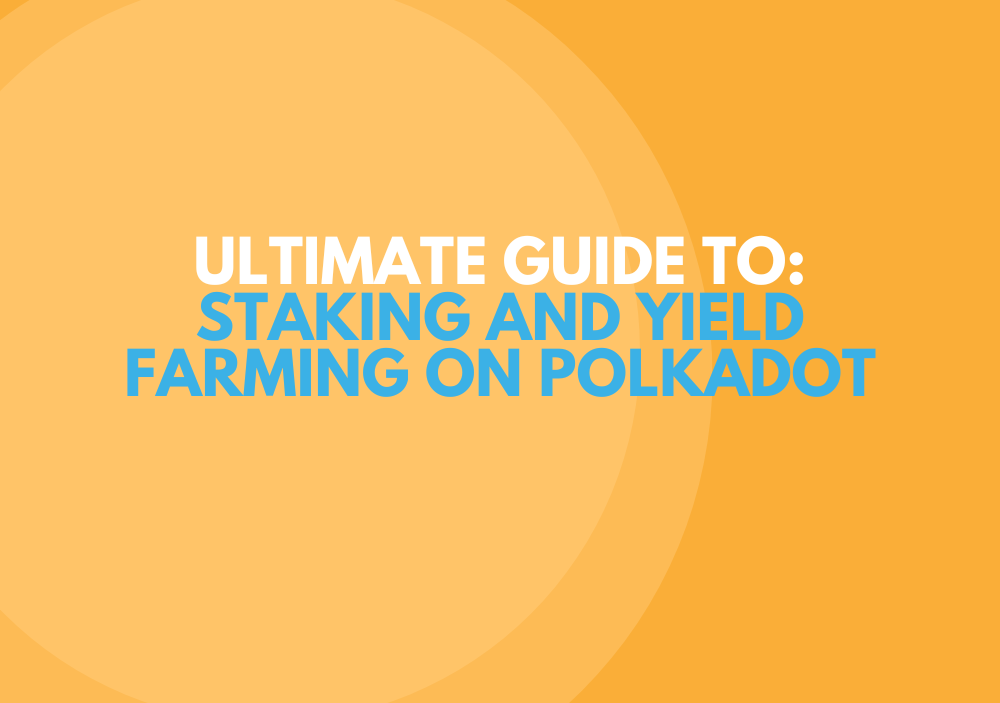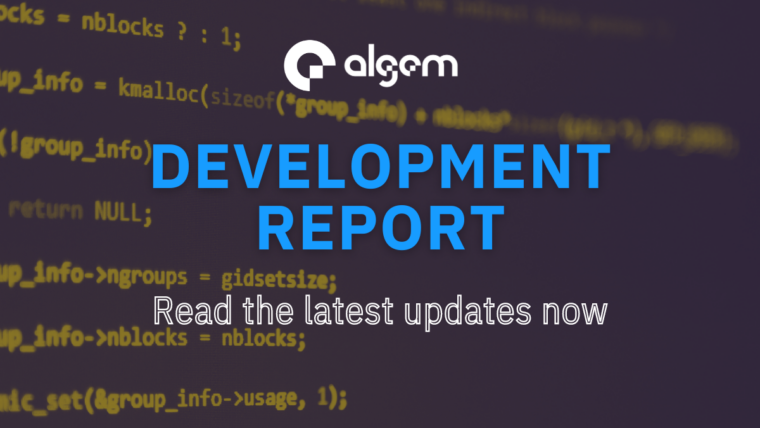Staking and yield farming are terms often used interchangeably in DeFi. The words, however, do not mean the same thing.
Staking is locking tokens to secure the network to validate transactions.
In exchange for securing the network, users who lock their tokens receive token rewards in an APR proportionate to the value of the number of tokens they have locked.
Several blockchains, such as Polkadot, Kusama, and Tezos, offer the opportunity for token holders to stake their assets.
Proof-of-stake (PoS) platforms typically set their APR with fixed inflation of the token supply.
Yield farming, also regarded as liquidity mining, involves the transient lending of tokens to DeFi platforms. By lending your assets to these platforms, you earn an APR on the value of the assets you have lent out.
The APR is usually significant but also comes with a lot of risks.
The protocols that lend your tokens are used as liquidity for trades on decentralized exchanges or loaning them out.
This way, they earn fees, which determine the APR you make on your tokens. A clear earning pathway is a sure way of knowing a protocol that will survive. If there’s no clear way to earn or earn enough for the APRs they supply, then it’s a risky venture.
Staking on Polkadot
Staking on Polkadot involves token holders locking up their tokens to secure the network. On Polkadot, the Proof-of-Stake (POS) consensus is the system of verifying transactions. This system involves validators( who verify the transactions ) and nominators( you, the token holder).
Validators stake their DOT for a chance to verify transactions on the blockchain and create new blocks. Nominators are regular DOT holders who nominate their DOT to validators, thereby increasing the chances of validators verifying transactions.
Validators are randomly selected to validate transactions, add a block to the blockchain and earn a reward. Nominators receive a portion of the rewards gained, validators verify transactions, and the network is decentralized and secure. Unstaking Dot staked takes about 28 days.
Staking on the Polkadot Parachains
All parachains on Polkadot except the Astar network offer the option to stake tokens, earn rewards, and secure the network, similar to what Polkadot offers. Tokens on the parachains are staked on Collators. Collators maintain parachains by collecting parachain transactions from users and producing state transition proofs for Relay Chain validators. In other words, collators support parachains by aggregating parachain transactions into parachain block candidates and making state transition proofs for validators based on those blocks.
What the Astar network offers through dApp staking is identical to the traditional staking mechanics but with some added features. Dapp staking on Astar incentivizes developers to create the best app possible. Dapp staking also incentivizes nominators to support the most promising dapps.
Developers can earn a basic income from dApp staking. Then, when they can get more of the community to vote their Astar to their dApps, they earn an even higher income. Rewards are paid out block by block, and nominators receive a percentage of these rewards. This initiative has yielded top-notch dApps like Algem, Sirius finance, Kagla, Arthswap, and many others. Unstaking ASTR staked through dApp staking takes 10 ERAs, approximately ten days.
Yield farming on Polkadot
Polkadot is a Layer 0 (L0) and houses a list of other projects called Parachains. Some of the parachains include Astar, Moonbeam, Acala, Crust, and more.
Other than Collator staking offered on these networks, other opportunities exist for you to participate in DeFi. Protocols on these networks provide various options for liquidity mining you can efficiently utilize. As stated above, these protocols come with some risk, and knowledge of how it works is required to make the best possible use and avoid losing your assets. Understanding how a liquidity pool works, the collateralization of loans, and the liquidations of assets are essential to use these protocols.
On Moonbeam,
- Stellaswap is the go-to AMM and offers you the option of liquidity mining. You can easily deposit your tokens into a liquidity pool and earn a percentage on swap fees for the pair you provided liquidity. The provided liquidity pair can be used to farm more rewards in Sella tokens, and the Stella tokens can be locked to earn more Stella tokens.
- Moonwell is a lending and borrowing platform. You can lend your tokens to Moonwell or borrow tokens after depositing collateral, earning a percentage APR on the tokens lent or borrowed. WELL, the governance token of Moonwell Artemis, is locked to secure the protocol and yield WELL for you when you lock your tokens.
- Other protocols offering DeFi services on Moonbeam include Zenlink, Beamswap, Solarflare, Lido Finance, and many more. These protocols offer services ranging from decentralized exchanges where users can swap, provide LPs, and farm to liquid staking platforms.
On Acala, protocols that offer DeFi services include Alluvial, Citizened, Kujira, and more.
Yield farming on Astar Network
They are a plethora of protocols on Astar that offer DeFi services. Some of these protocols include:
- SiO2 finance: SiO2 is a multi-virtual-machine lending hub where you can borrow assets by depositing collateral or lending out your assets to SiO2. You earn a percentage APR, paid in SiO2 tokens, on the amount lent out or borrowed. Locked SiO2 tokens generate more SiO2 tokens depending on the for which they will be locked.
- Arthswap: Arthswap’s main functionalities are that of a DEX. Arthswap allows you to supply liquidity pairs for tokens and earn swap fees on that pair. You can also farm with the Lp you have provided to earn ARSW, the governance token of Arthswap. Locking your ARSW is an avenue to earn rewards in ARSW.
- Sirius Finance: Sirius finance is a swap market for stablecoins. You can supply liquidity pairs of stablecoins on Sirius finance and earn a percentage of trade fees proportional to the amount supplied. The option of farming using the Lps is available, and the rewards are in the SRS token, which can be locked for varying periods to earn more SRS.
- Algem: Algem’s features include Liquid staking and Liquid lending. dApp stakers on Algem earn from dApp staking and receive NASTR, which they can use to participate in other DeFi platforms, effectively letting you earn more than you would from staking on any dApp.
Ready To Plunge Into The Polkadot?
Start with Astar Network and Algem with Algem’s Liquid Staking feature and explore all the DeFi opportunities our ecosystem has to offer!
About Algem
Algem is a dApp built on Astar Network and offers two main features: liquid staking and liquid lending. As the name implies, these two solutions enable ASTR holders to remain liquid with their assets while putting them to work. In addition, the liquid staking and lending solutions allow users to accumulate staking rewards and increase their earnings using Algem’s liquid nASTR tokens across Astar’s Defi ecosystem. In doing so, Algem supports other Defi protocols by providing liquidity and creating a sustainable and cooperative ecosystem on Astar Network and Polkadot.








How we had been making Algemantis Nautilus Pass NFT
Everything You Need To Know About Liquid Staking On Astar Network
Partnership with Sirius Finance
Introduction in Algem